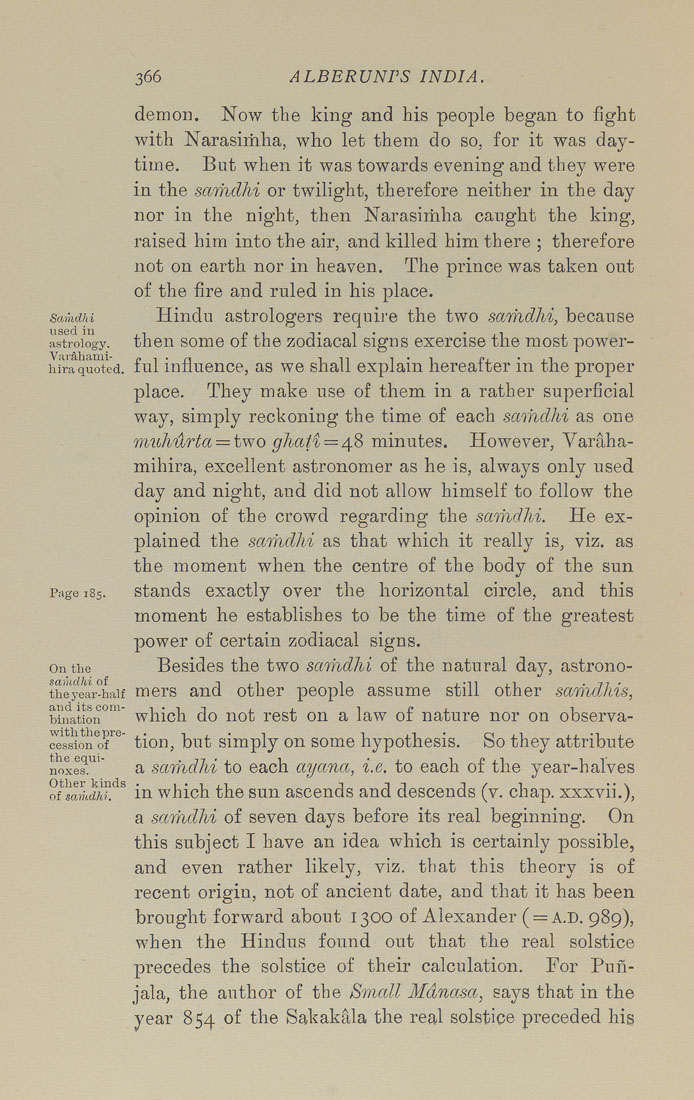Bīrūnī, Muḥammad ibn Aḥmad, Alberuni's India (v. 1)
(London : Kegan Paul, Trench, Trübner & Co., 1910.)
|
||
|
|
|
|
| Page 366 |

366 ALBERUNPS INDIA. demon. Now the king and his people began to fight with Narasirhha, who let them do so, for it was day¬ time. But when it was towards evening and they were in the sariidhi or twilight, therefore neither in the day nor in the night, then Narasirhha caught the king, raised him into the air, and killed him there ; therefore not on earth nor in heaven. The prince was taken out of the fire and ruled in his place. Samdhi Hindu astrologers require the two samdhi, because astrology, thcii somc of the zodiacal signs exercise the most power- hira quoted, ful influence, as we shall explain hereafter in the proper place. They make use of them in a rather superficial way, simply reckoning the time of each sctmdhi as one muhvlrta —two ghati = 4.S minntes. However, Varaha¬ mihira, excellent astronomer as he is, always only used day and night, aud did not allow himself to follow the opinion of the crowd regarding the sariidhi. He ex¬ plained the samdJii as that which it really is, viz. as the moment when the centre of the body of the sun Page 185. stands exactly over the horizontal circle, and this moment he establishes to be the time of the greatest power of certain zodiacal signs. Onthe Besides the two sctmdhi of the natural day, astrono- theyear-haif moTS and othcr pcoplc assumc still other samdhis, bination°™" which do uot TCst OU a law of nature nor on observa- cession^of'^^' tion, but simply on some hypothesis. So they attribute noxS'^'" a sariidhi to each ayana, i.e. to each of the year-halves oisaMhf. ^ in which the sun ascends and descends (v. chap, xxxvii.), a samdhi of seven days before its real beginning. On this subject I have an idea which is certainly possible, and even rather likely, viz. that this theory is of recent origin, not of ancient date, and that it has been brought forward about 1300 of Alexander ( = A.D. 989), when the Hindus found out that the real solstice precedes the solstice of their calculation. For Puh- jala, the author of the Small Mdnasa, says that in the year 854 of the Sakakala the real solstice preceded his |
| Page 366 |







